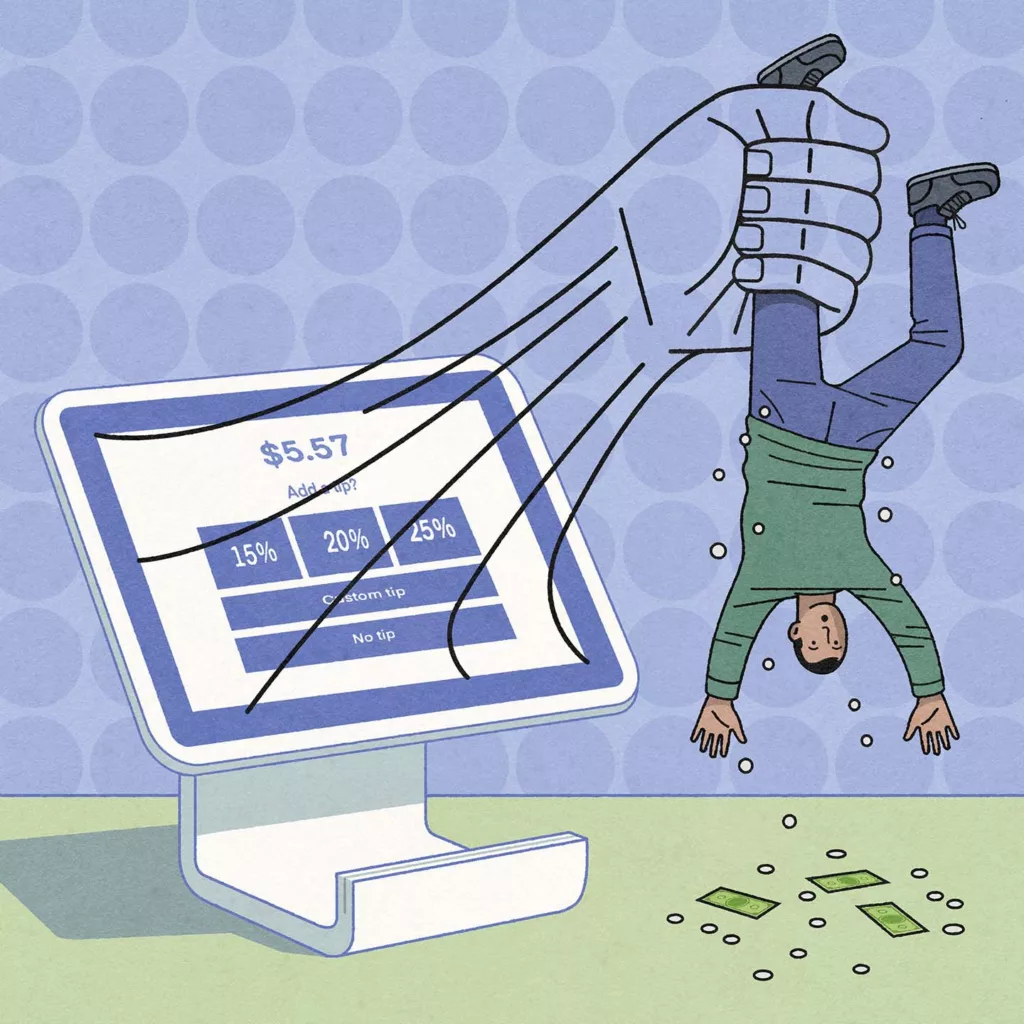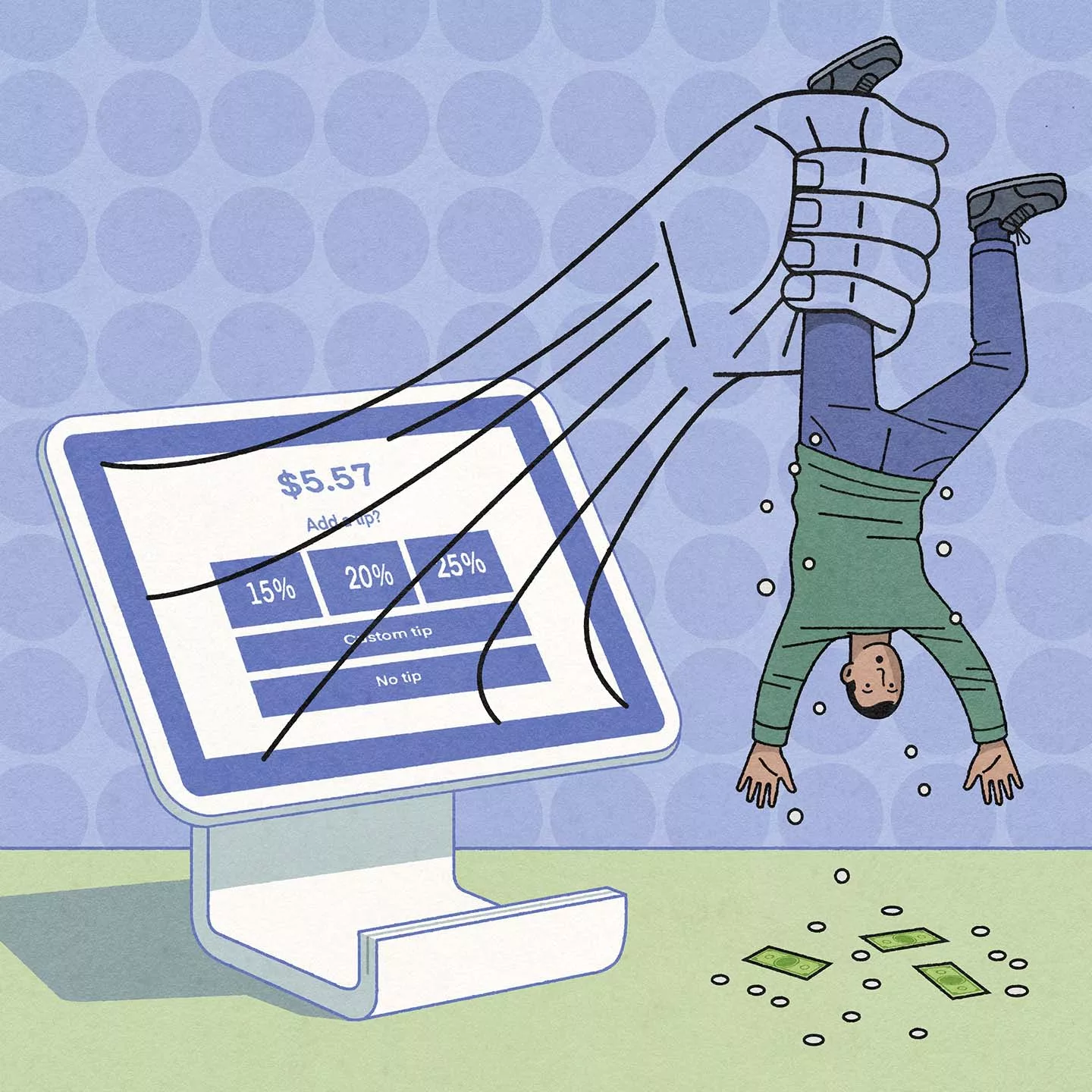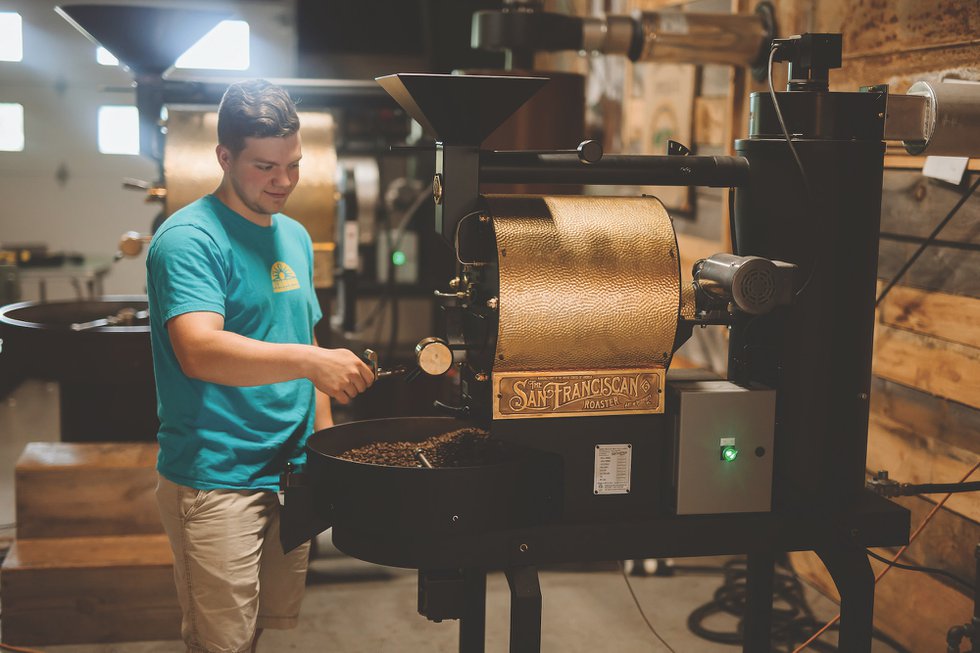There’s a little song and dance we’re all used to when paying at a restaurant, takeout spot, boutique food shop, or even a farmers market. It starts with the person behind the iPad who’s completing your sale saying something like, It’s gonna ask you a few questions.
The ensuing quiz is all about if and how much you want to tip for whatever service was just rendered. Though seemingly benign, the prompt can throw consumers into a full-on panic, bringing up a slew of their own questions: How much is fair? What if I had a bad experience? Do I really have to leave a tip for this bag of $8 artisanal potato chips I got off the shelf for myself? He put my muffin in a bag—is that tippable?
Before we were all conditioned to expect automated payment, tipping was something we did privately, scrawling our intentions on a line at the end of the bill before tucking our answer in a secure little booklet, meant only for the eyes of the server. Simultaneously, the ubiquitous touch screen has depersonalized this transaction while prompting patrons to pony up a tip in intervals of 10, 15, or 20 percent, all under the watchful glare of the iPad. It’s done the math for us—a blessing—but it’s also made a lot of assumptions that can tend to rankle, inspiring, at best, tip insecurity and, at worst, outright backlash.
If tipping and all its nuances stress you out, you’re not alone. According to BankRate, more than one in three (aka 35 percent) of Americans believe tipping culture has gotten out of control, and many are confused about who and how much to tip. Keeping a few things in mind before entering into transactions where tips are expected can help alleviate the stress.
It’s important to remember that, according to federal and state, law tips must go to service staff, whether they’re distributed individually or pooled and shared. It’s the people who serve us our meals, bus our dirty dishes, answer our questions, and navigate the hectic world of the kitchen for us who receive 100 percent of our gratuity, and they deserve it, regardless of how much we happened to enjoy (or not enjoy) our experience. While your server may have delivered sub-par service, other restaurant staff may factor into the equation.
In Virginia, tips make up the difference between what’s known as a subminimum wage paid to tipped employees ($2.13 as of 2024) and actual minimum wage, which is $12 an hour. If a tipped employee doesn’t earn enough in tips to make up the difference, the employer pays the remainder so that the employee can earn the full state minimum wage.
There’s also tax to consider. Here in the Commonwealth, the combined food and beverage tax and sales tax is 10 percent, and in some Virginia locales, there is an additional meals tax tacked on. The Emily Post Institute—the all-time arbiter of etiquette—says it’s OK if you calculate your tip based on your bill’s pre-tax total, but that requires math skills that you might not feel like calculating on the fly. Plus, payment screens now generate tip amounts based on grand totals, and frankly,
it’s just easier to choose that path.
And don’t forget that service fees are sometimes added to restaurant bills. They are discretionary fees that the restaurant management assigns, pre-tax, to cover their own costs. They may be shared with service staff, but they may also be used for things like overhead or to cover credit card fees. We’ve all seen it—more and more establishments are adding a few percentage points, usually from 1.5–3.5 percent, to cover their credit card fees. If you’re unclear about service fees on your bill, ask a manager.
Plenty of fuss has been made over the rise of tipping expectations, but at the end of the day, tipping is how we show gratitude when a job is well done.

Tipping 101
Online sources, including NerdWallet, Grub Street, and U.S. News & World Report, suggest these tipping guidelines:
For a full service meal: At least 20% if the service is good.
For meal delivery: Between 15% and 20% or a flat rate of $3–$5 for smaller deliveries. Consider the size of the order, the distance, the weather, the time, and other factors that might increase the amount.
For counter service: Not tipping for counter service is acceptable, as counter-service staff are typically paid a full wage, but consider rewarding exceptional service with an additional tip. Ten percent or more.
For takeout: 10–15% is a good rule of thumb. Keep in mind that servers are responsible for assembling and bagging your order in addition to waiting on in-person guests.
For grocery delivery: 20% is a fair tip rate for folks who brave the store to shop for your groceries, and yes, they can see what tip you’ve selected before they shop, so consider how your generosity may inspire them to do their best work.
This article originally appeared in the December 2024 issue.










